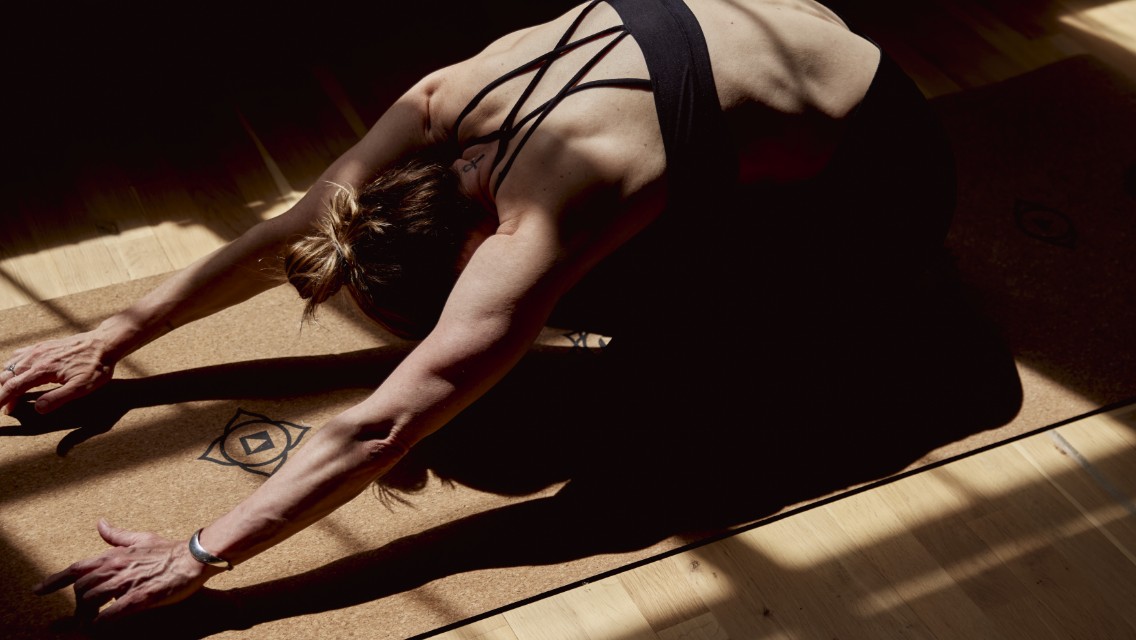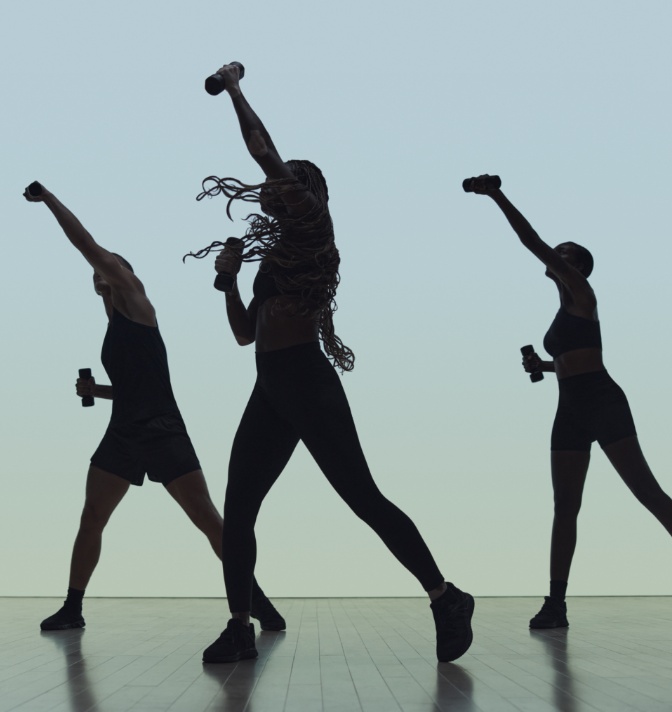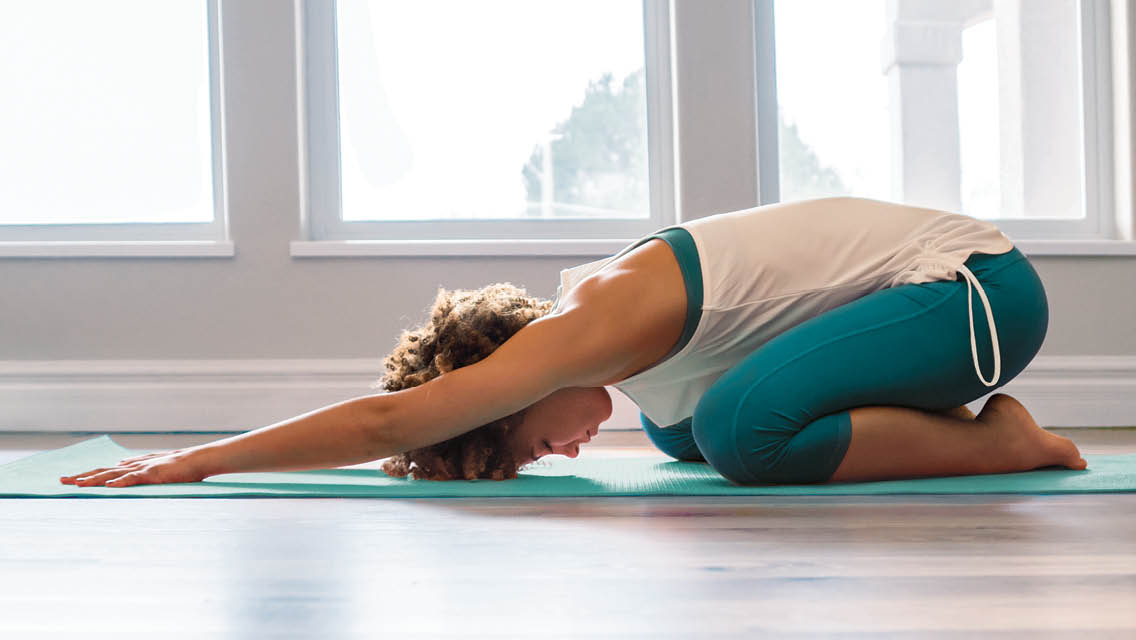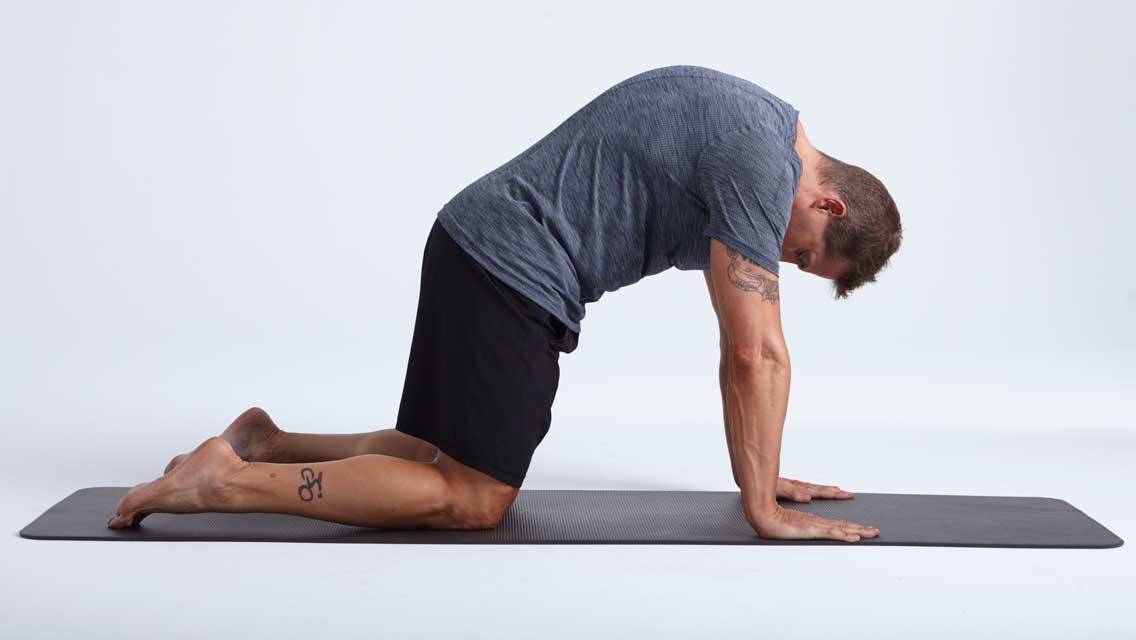When was the last time you took an opportunity to really stretch? Or how about set aside time for meditation or breath work? Yin yoga is a slower-paced style of yoga that allows you to do both at once.
SURRENDER is Life Time’s yin yoga class that gives you the opportunity to slow down and be present in your body. Physically, long-held yoga poses allow your muscles and joints to loosen up and help tissues become more flexible. Mentally, this style of practice challenges you to stay present with mindfulness and self-compassion while breathing to relieve tension.
The class involves a series of passive postures, mostly performed on a yoga mat on the floor. Poses are held for up to several minutes, which allows your fascia and joints to gradually compress or release. Guided by an instructor, you’ll learn to use your breath and observe your natural tendencies when faced with the sensations that arise in long-held poses.
To get an idea of what this class is like, we asked April Fort, boutique yoga leader at Life Time Cypress in Houston, Texas, to demonstrate three poses commonly performed in SURRENDER.
1. Seated Forward Bend
“This pose helps stretch your entire back body, from your spine all the way down to your hamstrings,” says Fort. “You may feel a stretch through your calf muscles too, depending on your flexibility level. Holding the posture for several minutes can bring a sense of calm to both your body and mind.”
- Sit on your mat with your legs straight out in front of you, with your sit bones firmly planted on the mat.
- Inhale through your nose and as you exhale, start to slowly walk your fingertips down the tops of your legs as you lean forward.
- Lower down as far as you feel comfortable and let gravity take you a little deeper. Rest your hands wherever you’re able to reach them — on your thighs, shins, or feet.
- Allow your body to relax into the posture and hold. Your head can hang heavy, your knees can soften, and your eyes can close.
- You may find that after a while, you’re able to stretch a little deeper as tension eases.
- After about three minutes, slowly come out of the posture by walking your hands back up your legs.
- Stacking one vertebra at a time, lengthen your spine so you’re sitting up tall. Open your eyes if you had them closed.
2. Pigeon Pose
“This pose stretches your hip flexors, glutes, and outer hips, which helps improve range of motion in your hips,” Fort explains. “It can also help relieve lower back pain by stretching muscles around the spine as you rest your torso down onto the mat in front of you.”
- Starting from child’s pose (seated onto your heels with your torso toward the floor and your forehead resting on the mat), inhale and come up onto your hands and knees, placing them about shoulder and hip width apart, respectively.
- Exhale and slide your right knee forward to your right wrist.
- Slowly move your right foot over toward your left wrist, trying to get your right knee into an angle that feels like a comfortable stretch. If you need more of a stretch, try moving your legs so your knee is farther toward a 90-degree angle.
- Tuck your left toes under and lengthen your left leg back behind you. (If this is uncomfortable in your knee or hip, you can modify by sinking the right hip down and bending your left knee in the back.)
- Inhale through your nose, and as you exhale, slowly walk your hands forward and lower your torso down toward the mat.
- You can stay on your elbows or stack your forearms and rest your head on your hands — whatever feels most comfortable for you.
- After about four minutes, slowly begin to walk your hands back and raise your torso. Rest your weight into your right hip and lengthen your left leg out to the side.
- Repeat pigeon pose on the other side.
3. Supine Spinal Twist
“This pose has benefits for both your spine health and mobility, especially if you spend long hours sitting throughout the day,” says Fort. “The weight of your legs drawing you into a twist helps release and create space in your lower back, open tight shoulders, and elongate the muscles in your spine.”
- Lying on your back with your knees bent and feet flat on the floor, cross your left leg over your right knee, as if you’re crossing your legs when sitting in a chair.
- Place your right hand on top of your left knee and extend your left arm out to the side.
- Exhale and let your knees move over toward the floor on the right side of your body.
- Turn your head to face your left arm and feel yourself melting into the mat.
- Notice the sensation of twisting in your spine.
- After about two minutes, roll your knees back up toward the ceiling and uncross your legs.
- Cross your right leg over your left knee and repeat on the other side.





